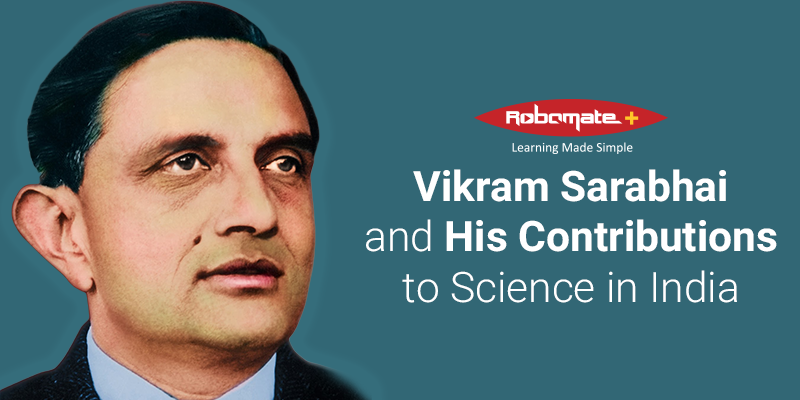Vikram Ambalal Sarabhai is popularly known as Vikram Sarabhai. is a renowned Indian physicist and industrialist. Dr. Sarabhai’s contributions in space research gave him recognition as the Father of the Indian space program. He was the innovator and creator of a number of institutions in the varied fields including but not limited to space, nuclear energy, arts, education, and management. His important contribution includes initiation of space research and development of nuclear power in India. He played an important role in convincing Government to initiate space research programs. He convinced the Government of India to form the Indian National Committee for Space Research (INCOSPAR) in 1962 and was the first chairperson of the committee. INCOSPAR was later renamed as Indian Space Research Organisation (ISRO) in 1969. He played an advisory role in the new setup.
Personal Life:
Vikram Sarabhai was born to Ambalal Sarabhai. The Sarabhais’ were the major industrialist and the family members were committed to Indian Independence. He belonged to Shrimal Jain community and practiced Jainism throughout his life. He was married in 1942 to classical dancer Mrinalini. The couple was blessed with two children, daughter, Mallika and son, Kartikeya Sarabhai. His daughter and son were activitist. His son was also an active person in science. He died on December 30, 1971, in Kovalam, India.
Education:
Vikram Sarabhai was born on August 12, 1919, in Ahmadabad, India in the family of an industrialist. He has been to Gujarat College, Ahmadabad. In 1940s, Vikram Sarabhai went to the University of Cambridge, England and studied natural sciences. He was forced to return to India due to World War II but his quest for knowledge didn’t end and he started research on cosmic rays. He was under the guidance of physicist Sir Chandrasekhara Venkata Raman at the Indian Institute of Science, Bangalore (Bengaluru).
He did his doctorate from the University of Cambridge in 1945 and he wrote a thesis, “Cosmic Ray Investigations in Tropical Latitudes.” Upon his return to India, he founded Physical Research Laboratory in Ahmadabad.
Professional life:
The Physical Research Laboratory (PRL) which was established from his residence in 1947 did research in cosmic rays. The institute was later established as the M.G. Science Institute, Ahmedabad, on 11 November 1947. The institute was in collaboration with Karmkshetra Educational Foundation and the Ahmedabad Education Society. The institute started with research on cosmic rays and the properties of the upper atmosphere. Later the research was extended to theoretical physics and radio physics for which grants were received from the Atomic Energy Commission.
He was a pioneer in establishing Operations Research Group (ORG), the first market research organization in India.
Apart from being a physicist, his area of interest included industry and business. He founded the Ahmadabad Textile Industry’s Research Association in 1947. His interest in professional management education in India, Sarabhai led to the formation of Indian Institute of Management in Ahmadabad in 1962.
He was instrumental in establishing the Indian National Committee for Space Research in 1962, which is now called as Indian Space Research Organization (ISRO). Apart from ISRO, Sarabhai was also responsible for setting up of Thumba Equatorial Rocket Launching Station.
Indian Space Program:
Indian Space Research Organization (ISRO) is his biggest contribution to the country. Dr. Homi Jehangir Bhabha, was the father of India’s nuclear science program. He supported Dr. Sarabhai for setting the first rocket launching station in India. Dr. Sarabhai’s discussion with NASA resulted in the launch of Satellite Instructional Television Experiment (SITE) (July 1975 – July 1976).
Know About: Dr. Homi Bhabha Balvidnyanik Spardha( HBBVS)
Dr. Sarabhai overtook the position of Homi Bhabha in 1966, as chairman of the Atomic Energy Commission of India, after the latter’s death. He continued the work of Homi Bhabha in the field of nuclear research. He was responsible for the establishment and development of nuclear power plants. He has worked for Defense Ministry for developing nuclear technology.
Sarabhai initiated programs to take education to remote villages through Satellite communication programs. Sarabhai efforts led to the start of a project for the launch of an Indian satellite. The first Indian satellite launched was Aryabhata. It was put in orbit from a Russian cosmodrome.
Dr. Sarabhai started a project for the fabrication and launch of an Indian Satellite. As a result, the first Indian satellite, Aryabhata, was put in orbit in 1975 from a Russian Cosmodrome.
Dr. Sarabhai was instrumental in establishing institutions such as:
- Physical Research Laboratory (PRL), Ahmedabad
- Indian Institute of Management (IIM), Ahmedabad
- Community Science Centre, Ahmedabad
- Space Applications Centre, Ahmedabad
- Electronics Corporation of India Limited (ECIL), Hyderabad
- Uranium Corporation of India Limited (UCIL), Jaduguda, Bihar
- Darpan Academy for Performing Arts, Ahmedabad
- Vikram Sarabhai Space Centre, Thiruvananthapuram
- Faster Breeder Test Reactor (FBTR), Kalpakkam
- Variable Energy Cyclotron Project, Calcutta
Important Positions Held:
- In 1962 he was the president of Physics section in Indian Science Congress
- In 1970 he was the president of the General Conference of the I.A.E.A., Vienna
- In 1971 he was the vice-president Fourth UN Conference on ‘Peaceful Uses of Atomic Energy
Achievements and Awards:
- Awards: Sarabhai was awarded Shanti Swarup Bhatnagar Medal in 1962. He is the recipient of India’s two highest honors the Padma Bhushan (1966) and the Padma Vibhushan. He was awarded Padma Vibhushan posthumously in 1972.
- The Indian Space Research Organization located in Thiruvananthapuram is named in memory of Sarabhai as Vikram Sarabhai Space Centre, (VSSC)
- On his first death anniversary (30 December 1972) Indian postal services released a postal stamp.
In 1973, the International Astronomical Union named a lunar crater as the Sarabhai crater.











